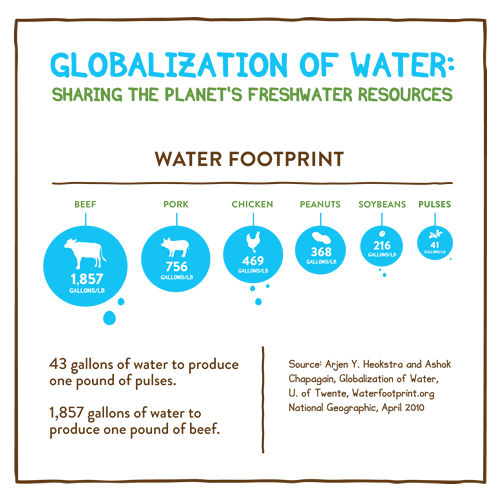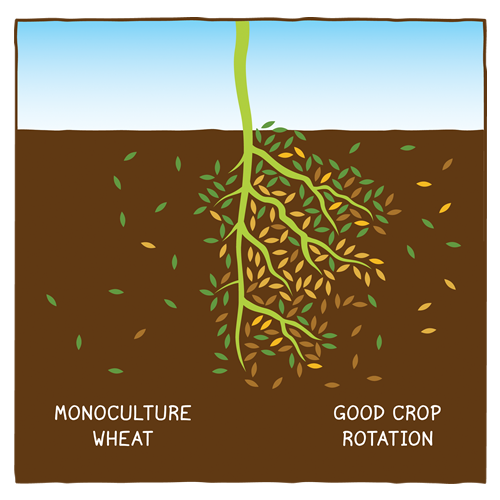Your Partner for Sustainable Food
Pulses are a low carbon footprint food
Pulses utilize soil bacteria to draw nitrogen from the air. This natural process replaces the need to add nitrogen fertilizers in pulse crops, which means pulses use half the energy inputs of other crops.
When soil is fertilized with nitrogen in the form of manure, fertilizer, or crop residue, soil micro-organisms convert some of this nitrogen into nitrous oxide, which is a powerful greenhouse gas. Nitrous oxide is 300 times more potent than carbon dioxide (CO2) and represents around 46% of the greenhouse gas emissions from global agriculture1.
Since greenhouse gas emissions related to crop production are largely driven by nitrogen fertilizers, nitrogen-fixing pulse crops have a lower carbon footprint compared to other crops.

Pulses are a Water Efficient Source of Protein
When pulses are grown, they use 1/2 to 1/10 the water of other sources of protein 2. Many pulse crops are adapted to dry environments, making them well-suited for areas that are prone to drought.
Pulses like peas and lentils extract water from a shallower depth, leaving more water deep in the soil for the following year’s crop. This increases the water use efficiency of the entire crop rotation.

Pulses Enrich the Soil Where They Are Grown
Pulse crops produce a number of different compounds that feed soil microbes and benefit soil health. After pulse crops are harvested, they leave behind nitrogen-rich crop residues that provide extra nutrients for the next crop that is grown.
Growing pulse crops in rotation with other crops enables the soil to support larger, more diverse populations of soil organisms that help maintain and increase soil fertility.

- Pulse provided opportunities for microbial life to flourish
- Breaks disease, weed and insect cycles
- Increases microbial diversity, helping crops to access nutrients
Key References:
- "Growing Greenhouse Gas Emissions Due to Meat Production." UNEP, 1 Oct. 2012. Web. 10 July 2015.
- Hoekstra, A.Y. and Chapagain, A. 2008. Globalization of Water: Sharing the Planet’s Freshwater Resources. Wiley-Blackwell.
